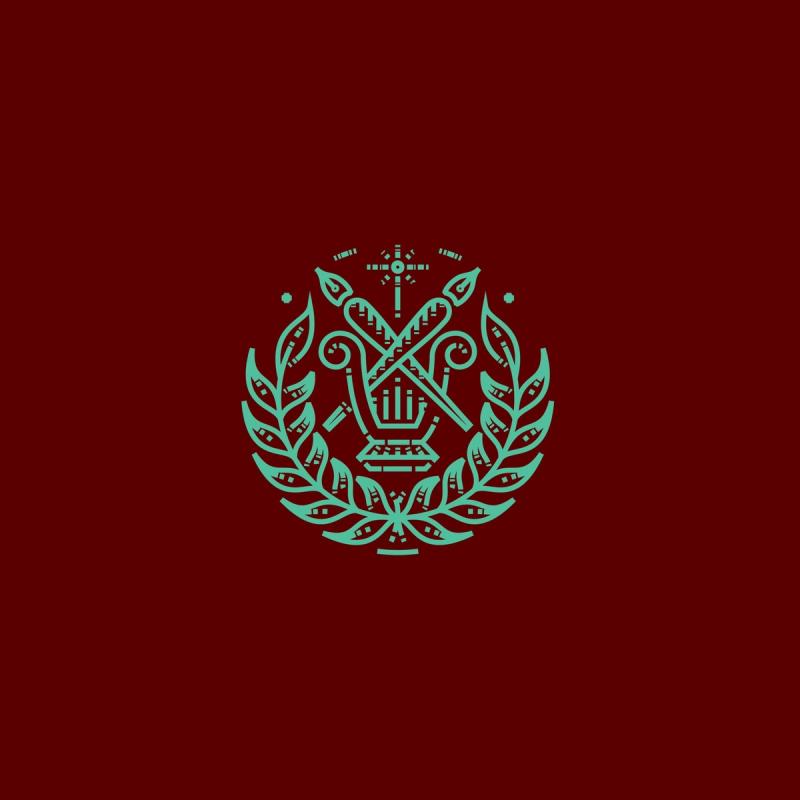Most readers of Silence, Shusaku Endo’s celebrated novel of Christian persecution in seventeenth-century Japan, are left haunted by its conclusion. In an agonized bid to alleviate the suffering of others being tortured in his stead, the Jesuit priest Rodrigues formally apostasizes, placing his foot on an image of Christ’s face known as a fumi-e. At the moment of ultimate crisis, the image speaks to him in the voice of Jesus. “Trample! It was to be trampled on by men that I was born into this world. It was to share men’s pain that I carried my cross.”[1] And so Rodrigues tramples.
Endo’s novel thus ends on a profoundly ambiguous note. Is Rodrigues’s vision a hallucination brought on by fatigue and stress, an excuse for allowing humanitarianism to subvert the demands of faith? But suppose his theophany is a genuine encounter with the living Lord. Is Rodrigues’s willingness to risk his own eternal salvation for the sake of others, paradoxically, an act that allows him to participate in the sufferings of his Savior? There is, after all, a shadow here of Paul’s cry in Romans: “I could wish that myself were accursed from Christ for my brethren, my kinsmen according to the flesh.”[2] The question lingers, unresolved.
By contrast, Endo’s later novel, The Samurai, concludes with disgraced samurai Hasekura coming to Christian faith in the course of a globe-spanning journey, and going courageously to his martyrdom upon his return home. In so doing, itpresents a refracted version of Silence’s central dilemma that concludes—for the Christian believer—in a decidedly more familiar way. Viewed in light of The Samurai, then, it would appear that the first reading of Silence is correct: at the utmost, Rodrigues fails, and seeks to rationalize away his weakness. Hasekura, Rodrigues’s spiritual successor, faces death heroically.
And yet the parallel is not quite exact, because Rodrigues’s apostasy is not merely a question of martyrdom as such. Rather, it is an act committed in the shadow of existential despair, a despair which never quite emerges in The Samurai’s pages.
Silence centers on Rodrigues’s search for the renegade priest Father Ferreira, who—readers eventually learn—has abandoned his mission altogether and forfeited all hope of witnessing within Japan. His abdication, however, is no simple matter of burnout or fear of reprisals. Rather, it is rooted in Ferreira’s conviction that there is no possibility of inculturating a distinctively Japanese Christianity at all—that not only has his mission failed, but that all Christian missions must necessarily fail. On Ferreira’s view, the Western and Japanese world-pictures are simply too metaphysically alien to one another, such that no possibility exists of translating faith-claims across traditions.
As Ferreira explains to Rodrigues in a haunting monologue:
From the beginning those same Japanese who confused “Deus” and “Dainichi” twisted and changed our God and began to create something different. Even when the confusion of vocabulary disappeared the twisting and changing secretly continued. Even in the glorious missionary period you mentioned the Japanese did not believe in the Christian God but in their own distortion. . . . [I]n the churches we built throughout this country the Japanese were not praying to the Christian God. They twisted God to their own way of thinking in a way we can never imagine. . . . The Japanese till this day have never had the concept of God; and they never will. . . . The Japanese are not able to think of God completely divorced from man; the Japanese cannot think of an existence that transcends the human.[3]
Ferreira’s arguments slice deeply because, throughout the remainder of Silence, Endo leaves them unrebutted. No matter one’s interpretation of the novel’s ending, as either diabolical or obliquely redemptive, Ferreira’s philosophical battering-ram still stands.
What’s more, Endo makes no attempt in The Samurai to undermine any of Ferreira’s metaphysical claims. Indeed, the Christ who wins Hasekura’s allegiance comes to him as no “Lord” at all; what haunts Hasekura is, above all, the image of the crucified Christ that hovers over him all through his travels. For Hasekura, “it seemed as though that wretched man was much like himself as he sat abstractedly beside the hearth.”[4] And Hasekura’s Jesus is, in the end, the one who walks beside him on his lonely path to martyrdom. As he puts it,
I suppose that somewhere in the hearts of men, there’s a yearning for someone who will be with you throughout your life, someone who will never betray you, never leave you—even if that someone is just a sick, mangy dog. That man became just such a miserable dog for the sake of mankind.[5]
Absent here are any larger questions of cosmology or ecclesiology, or attempts to resolve the Deus/Dainichi translation issue. Indeed, perhaps surprisingly for a Japanese Catholic writer, here Endo locates Hasekura’s salvation in the form of the very “personal relationship with Christ” so often (pejoratively) associated with Protestantism.
And lest any of Endo’s readers be tempted to write off Ferreira’s remarks as merely expressions of Western chauvinism, there is ample reason to conclude that the traditional idea of Dainichi is something quite different from classical Christian theism. The Japanese priest-philosopher Kakuban wrote that, “from all the buddhas, bodhisattvas, and sages above down to the eight orders of beings below—deities, gods, dragons, demons, and so on—there is nothing that is not the ground—Dainichi Buddha. In opening the gate of the five cakras through practice, one reveals the buddha-as-cosmos in itself.”[6] And, Kakuban intimates, the crucial metaphysical terms are reversible: “the names of all buddhas and bodhisattvas from all times and places are no other than different names for the one great cosmos-as-buddha.”[7]
The traditional Japanese world-picture, then, does appear to tend toward a classical pantheism that draws no clear line between created and uncreated reality. Reverence for Dainichi would seem to be a prime case of what Steven D. Smith terms “immanent religiosity,”[8] a spirituality that “affirms the reality of the sacred but locates that sanctity within nature, or within life in the world.”[9] And so Ferreira is right that this world-picture, one lacking an idea of “existence that transcends the human,” cannot easily be squared with the transcendent God of Christian thought. Rodrigues’s despair is seemingly well founded.
Thus far, a seemingly unbridgeable metaphysical gulf. So how were philosophical controversies navigated when European and Japanese cultures first encountered one another?
As Jason Ānanda Josephson Storm explains in The Invention of Religion of Japan, this process was a complex and ongoing one, one that began with Christians and Japanese each interpreting the other within the categories of heresy permitted by their respective theologies. Early Christian visitors to Japan viewed the Buddha-temples of Japan as idolatrous, while their Japanese interlocutors viewed Christianity as “not only a copy of Buddhism, but worse, a bad imitation,” a paradigm that led them to conceive of Jesus as “having studied, but fundamentally misunderstanding, key Buddhist concepts” (47-51). A “middle term” was plainly required to bridge the gap between the traditions of Deus and Dainichi—and as diplomatic documents reflect, that term came to be “religion,” a word that had no indigenous Japanese equivalent (79).
Josephson Storm goes on to trace the wide-ranging implications of this development. For one thing, to posit the concept of “religion,” specifically as a set of creedal commitments rooted in the interiority of the individual, was inevitably to posit a rupture between that secular space of “already accomplished facts or realities independent of belief” and the religious domain of “superstition that cannot be expelled” (260). Folk magic and heterodox superstitions, of course, were to be suppressed (223).
For another, the “invention of religion” necessarily entailed the deliberate construction of a set of “scientific” orthodoxies fraught with metaphysical assumptions of their own. In the Japanese context, those orthodoxies coalesced into the “nonreligion” of State Shinto, a project of conscious harmonization between Western scientific findings—which had been expurgated of any overt Christian theological references as part of their importation into Japan—and traditional Japanese religious folkways (Josephson, 103-04). On this view, claims that Westerners might think of as “religious” or “theological” were conceived as statements about the way the empirical world was, with spiritual beings simply existing as part of the metaphysical furniture of the universe, alongside atoms and thunderstorms and electromagnetism. Such a synthesis gave a decidedly teleological cast to the tenets of official science, such as the claim that “the direction of the movement of the God Izanagi’s heavenly spear accounted for the direction of stellar motion” (116-17). And to be sure, the eventual evacuation of this explicitly theological language from “official” science does not make the remaining concepts any less religiously fraught.
In short, Josephson Storm suggests, one must reckon with ultimate questions “all the way down,” even within disciplines that claim total objectivity. Splitting “religion” and “superstition” off from “science” is not actually a resolution of fundamental metaphysical disagreements; it is a deferral or masking of those disagreements. Ferreira’s dilemma rears its head yet again.
Perhaps, centuries after those first intercultural encounters, it has become possible for some scholars to speak the language of Deus and Dainichi alike, reasoning toward common foundations; sophisticated work is still being done on this question.[10] But Josephson Storm’s argument has deeper, more sobering implications for evolving “postliberal” critiques of the contemporary world.
If the experience of Japan is any indication, politically-motivated responses to an encounter with a rival tradition tend not to be reassertions or rearticulations of an existing tradition, but reinventions of that tradition. Josephson Storm even observes that, with the rise of State Shinto, the character of the supernatural otherworld was reconceived in an effort to sanctify the ideal of scientific mechanization: the domain of divinity “was not imagined as a pastoral paradise . . . [but] as a technological wonderland full of mechanical marvels” (113). Today, the temptation to make this same move—to do theology in view of political ends, rather than vice versa—is always at hand. And to the extent that the legitimate development of a tradition occurs organically, as a matter of the outworking of its internal premises, artificial attempts to “push the tradition” in a particular direction are inconsistent with that principle.
And paradoxically, it is the very alleged disjunction upon which this tactic is predicated, the very assertion of the need to shore up “religion” in its battle against “secularity,” that risks destabilizing the place of theology in contemporary life. To concede the reality of “a secular age,” Josephson Storm’s argument implies, is actually to bring that “secular age” into being, with its distinctively self-unaware idea of “science”—that is, a tradition-bound metaphysics that denies it is a tradition-bound metaphysics.
Hence it would seem that the postliberal project must be less a revolt against the “secular” status quo than an unveiling, a reclamation of the theological underpinnings that inevitably suffuse every aspect of life. There is no reason to concede that terms like Deus and Dainichi have been displaced or superseded, because they haven’t. They’ve simply been forgotten or moved into the shadows.
John Ehrett is editor in chief of Conciliar Post, an online publication dedicated to cultivating meaningful dialogue across Christian traditions, and a Patheos columnist writing at Between Two Kingdoms. He is a graduate of Yale Law School and is currently pursuing a Master of Arts in Religion at the Institute of Lutheran Theology.
[1] Shusaku Endo, Silence, trans. William Johnston (New York: Taplinger, 1969), 259.
[2] Rom 9:3.
[3] Endo, Silence, 227–29.
[4] Shusaku Endo, The Samurai, trans. Van C. Gessel (New York: New Directions Books, 1980), 242.
[5] Endo, The Samurai, 245.
[6] “Kakuban,” in Japanese Philosophy: A Sourcebook, eds. James W. Heisig, Thomas P. Kasulis, and John C. Maraldo (Honolulu, HI: University of Hawai’i Press, 2011), 78.
[7] “Kakuban,” 77.
[8] Steven D. Smith, Pagans and Christians in the City: Culture Wars from the Tiber to the
Potomac, 256.
[9] Smith, Pagans and Christians in the City, 223.
[10] See James Dominic Rooney, “Being a ‘Not-Quite Buddhist Theist,’” Religious Studies (2021): 1–14.



